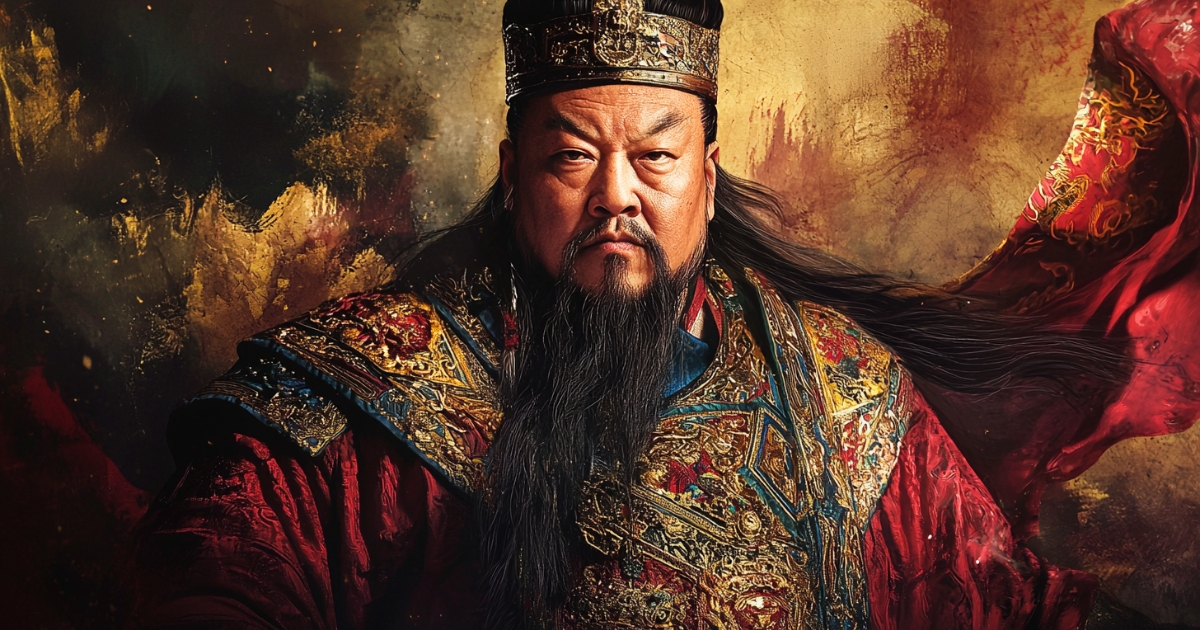- Kublai Khan: The Eastern Conqueror Who Built the Mongol Empire’s Golden Age
- Conquest of China and Establishment of the Yuan Dynasty
- Dadu (Beijing): The New Imperial Capital
- Expansion into East and Southeast Asia
- Invasion of Japan: An Ambition Thwarted
- Kublai’s Governance: Managing a Multi-Ethnic Empire
- Kublai as a Facilitator of East-West Exchange
- Kublai Khan’s Legacy: Transforming Eurasia
- Conclusion: The Achievements of a World-Changing Conqueror
Kublai Khan: The Eastern Conqueror Who Built the Mongol Empire’s Golden Age
In the latter half of the 13th century, the Mongol Empire, which controlled vast territories across Eurasia, reached its greatest extent under the reign of Kublai Khan. Grandson of Genghis Khan, Kublai ascended to the throne as the 5th emperor of the Mongol Empire in 1260 and ruled for about 34 years until his death in 1294. His era marked not only the peak of the Mongol Empire but also the most active period of East-West cultural exchange.
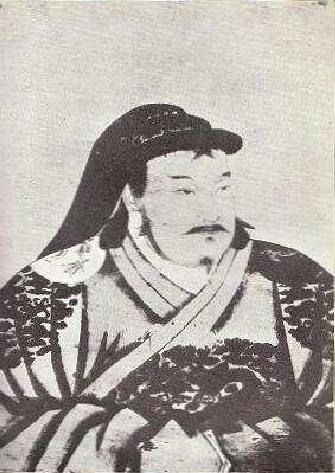
Portrait of young Kublai by Araniko, a Nepalese artist who served in Kublai’s court. He ruled as the 5th emperor of the Mongol Empire for 34 years. By Araniko
Conquest of China and Establishment of the Yuan Dynasty
One of Kublai Khan’s greatest achievements was the conquest of all of China and the establishment of the Yuan Dynasty. In 1271, Kublai adopted the dynastic name “Great Yuan,” embracing the traditional Chinese dynastic nomenclature. This move aimed to legitimize Mongol rule over China while also demonstrating a willingness to adopt Chinese cultural and administrative systems.
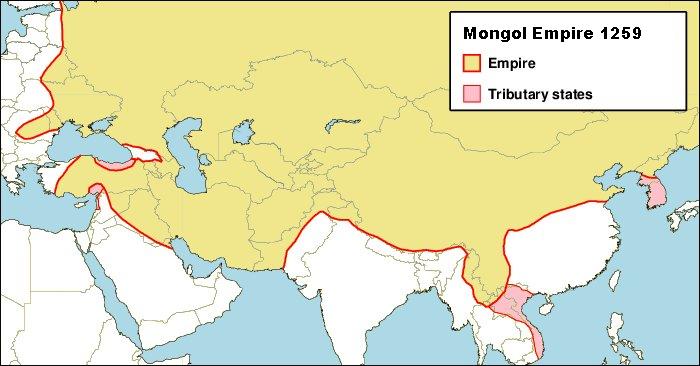
The Mongol Empire at its greatest extent during Kublai Khan’s reign, controlling much of the Eurasian continent. By Keith Pickering – Own work, CC BY-SA 3.0, Link
In 1279, Kublai defeated the Southern Song dynasty, unifying China and becoming the first Mongol to rule over all of China. This conquest not only greatly expanded the Mongol Empire’s territory but also significantly changed the empire’s character.
Dadu (Beijing): The New Imperial Capital
Kublai Khan built Dadu, present-day Beijing, as his new capital. Dadu developed into an international city where Eastern and Western cultures merged, becoming a center of trade visited by many foreign merchants and envoys.
Praised by Marco Polo as “the world’s largest city,” Dadu was a planned metropolis of grand scale. It featured an inner city with palaces and government offices, an outer city with commercial districts and residential areas for ordinary citizens, and artificial lakes and gardens, all symbolizing Kublai’s authority and wealth.

The Gaocheng Astronomical Observatory built in 1276 in Dengfeng, Henan Province. Astronomy greatly developed in Dadu during Kublai Khan’s reign. This precise observation facility demonstrates the high level of scientific technology in the Yuan Dynasty.
Expansion into East and Southeast Asia
Not content with conquering China, Kublai Khan sought to expand his influence to surrounding regions. He made the Korean Goryeo Dynasty a vassal state and launched expeditions to Vietnam (then Dai Viet) and Burma (Myanmar). He also established control over Tibet and various tribes on the Mongolian plateau.
Notably, he attempted overseas expeditions. In the 1280s, he sent an expeditionary force to Java, attempting to expand into Southeast Asian waters. While these expeditions were not always successful, they demonstrated Kublai’s ambitious expansion policy.
Invasion of Japan: An Ambition Thwarted
The most famous of Kublai Khan’s foreign expansion policies were his two attempts to invade Japan. Both the first invasion in 1274 and the second in 1281 failed due to typhoons (known as kamikaze or “divine wind”).
In the first invasion, about 30,000 troops landed in northern Kyushu but were forced to retreat due to Japanese resistance and storms. The second invasion involved an unprecedented force of over 100,000 men but again encountered a typhoon and suffered devastating losses.
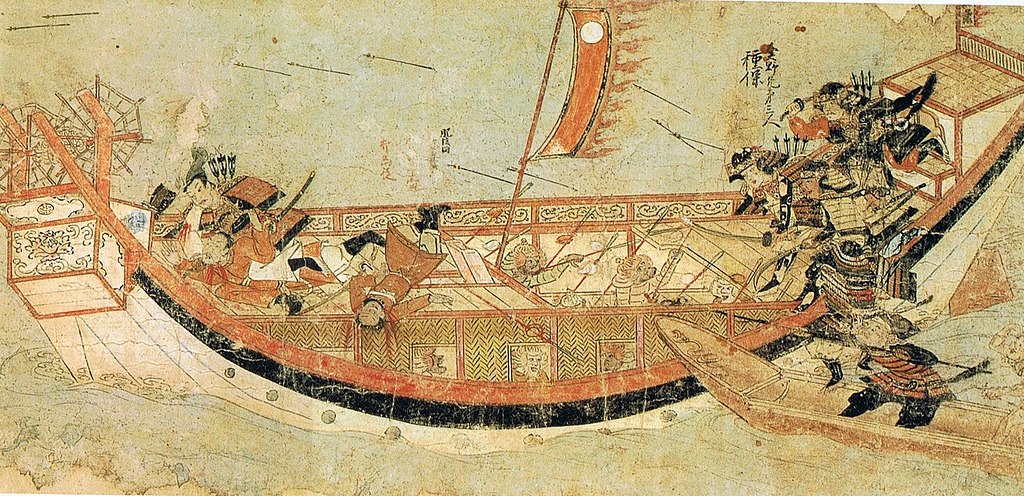
A battle scene between Mongol and Japanese forces depicted in the Mōko Shūrai Ekotoba. It illustrates Kublai Khan’s invasion of Japan.
These failed invasions put a check on the Mongol Empire’s eastward expansion. For Japan, they became historic events of repelling foreign invaders, remembered for generations to come.
Kublai’s Governance: Managing a Multi-Ethnic Empire
To govern his vast territories and diverse peoples, Kublai Khan adopted flexible and practical policies. While maintaining traditional Mongol governance methods, he incorporated Chinese bureaucratic systems and legal frameworks to establish an efficient centralized administration.
A notable feature was the introduction of an ethnic-based social hierarchy. Mongols were at the top, followed by Semu (Central and West Asians), Han (Northern Chinese), and Nanren (Southern Chinese). This system aimed to prevent rebellions by subjugated peoples while also allowing for the recruitment of talented individuals.
Kublai also showed religious tolerance, allowing the coexistence of various religions including Buddhism, Islam, and Christianity. This policy promoted the exchange of diverse cultures and ideas.
Kublai as a Facilitator of East-West Exchange
Kublai Khan’s reign is known as the period when East-West cultural exchange was most active. The security of the Silk Road enabled frequent travel by merchants, religious figures, and scholars.
The stay of Italian merchant Marco Polo in China was a symbolic event of this era. His book, “The Travels of Marco Polo,” introduced Chinese and Asian culture to Europe, inspiring later ages of exploration.
Kublai was also enthusiastic about scientific and technological development, promoting the fusion of Eastern and Western knowledge in fields such as astronomy, medicine, and agricultural technology. He also introduced progressive policies like the use of paper money and the establishment of a postal system.
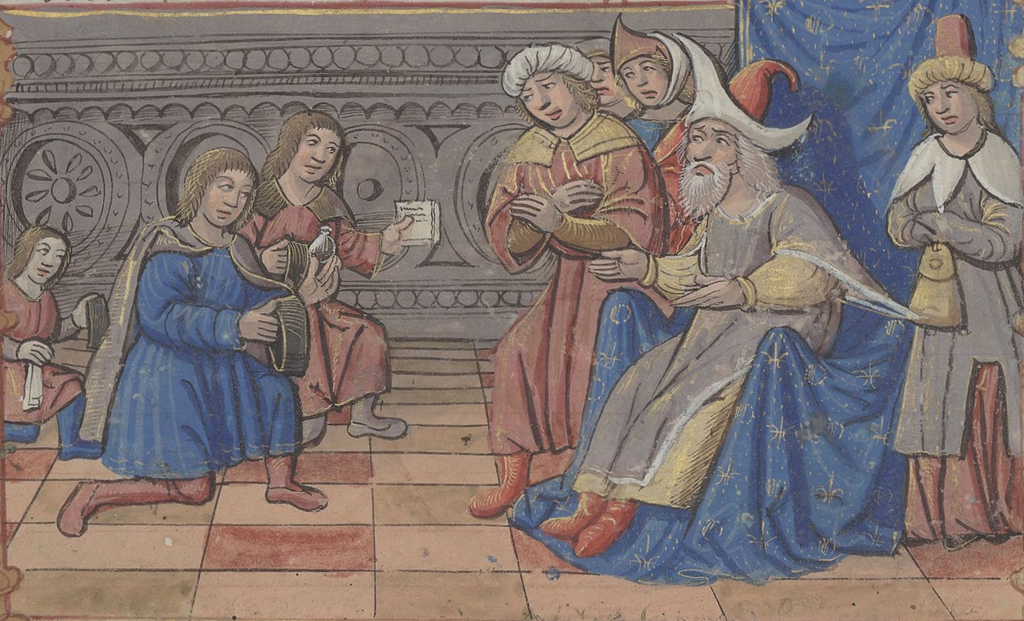
A scene from around 1500 CE depicting Marco Polo’s meeting with Kublai Khan, from a medieval illuminated manuscript (BnF Arsenal n° 5219). It symbolically represents the East-West cultural exchange as imagined by Europeans. By Robert Frescher
Kublai Khan’s Legacy: Transforming Eurasia
The changes brought about by Kublai Khan’s reign had long-lasting and far-reaching effects across Eurasia. Mongol rule directly connected Eastern and Western civilizations, enabling large-scale exchanges of culture, technology, and ideas.
However, Kublai’s governance also showed a Mongol Empire increasingly influenced by Chinese culture. This would later become one of the factors in the empire’s division and decline.
Nevertheless, the vast empire and governance system established by Kublai Khan continued to greatly influence the history of Central Asia and China in later generations. The character of modern China as a “multi-ethnic state” can be seen as one of the legacies of the Yuan Dynasty era.
Conclusion: The Achievements of a World-Changing Conqueror
Kublai Khan’s era was a rare period when the Mongol Empire reached its greatest extent, placing much of the Eurasian continent under a single political system. His rule not only brought about military conquests but also cultural fusion and economic prosperity, significantly altering the course of world history.
Accurately evaluating Kublai Khan’s achievements and limitations provides important perspectives for understanding modern global society. His challenge of governing vast territories and realizing the coexistence of diverse cultures may have relevance to the challenges faced by international society today.
